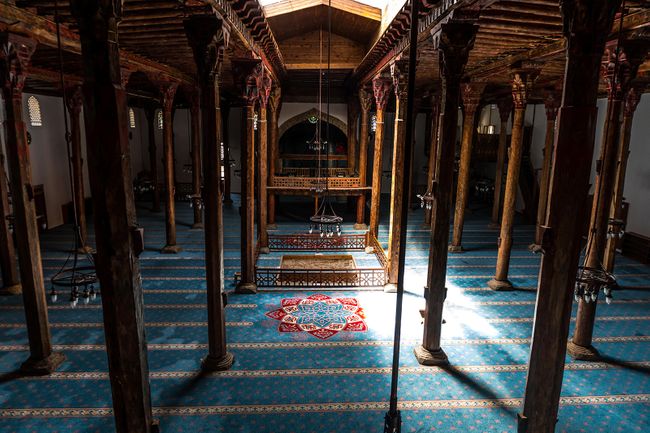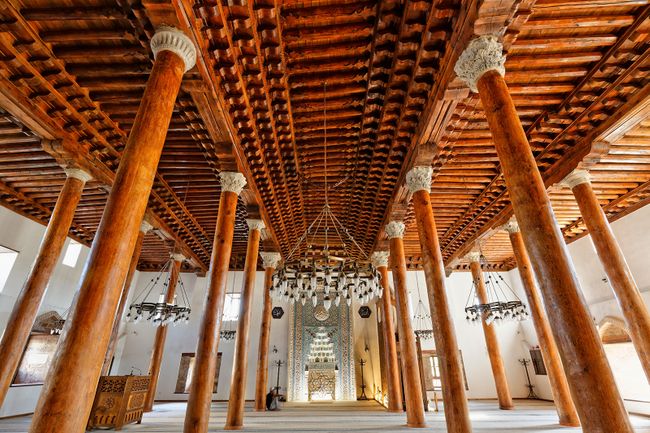The small and very atmospheric town of Sivrihisar, 124 kilometres northeast of Afyon, attracts relatively few visitors despite being home to the forest mosque with the largest number of wooden columns, a full 67 of them holding up the raftered ceiling of an Ulu Cami built in 1275. Sivrihisar is just down the road from the remains of Roman Pessinus at Ballıhisar, and several of the columns perch on marble bases pilfered from the site in the years before modern enthusiasm for archaeology rendered such reuse unimaginable.
If you’re without a car, the Aslanhane Mosque in Ankara, 136 kilometres northeast of Sivrihisar, is by far the easiest of the forest mosques to visit, snuggling down on the hillside beneath the ancient Hisar (Castle) and conveniently close to the popular Archaeology Museum. Here, too, the columns of a mosque built in 1289-90 rest on stone bases presumably filched from the old Roman city, other traces of which pop up on and around the foot of the hill.
The trickiest to reach without a car is the small Mahmutbey Mosque in the remote village of Kasaba, 250 kilometres northeast of Ankara, near Kastamonu. Built belatedly in 1366, it boasts a mere four wooden columns which robs it of the ‘forest’ feeling of its fellows. Instead, an elaborate gallery adds to the stunning visual feast: every surface is decorated with delicate orange and red kalemişi and the incredible painted rafters of the ceiling evoke those of some of England’s finest medieval churches. Alas, its remoteness left the mosque painfully vulnerable to theft; after its wooden door was stolen then recovered, the decision was made to house it more securely in the 19th-century Liva Paşa Konağı museum in Kastamonu.







